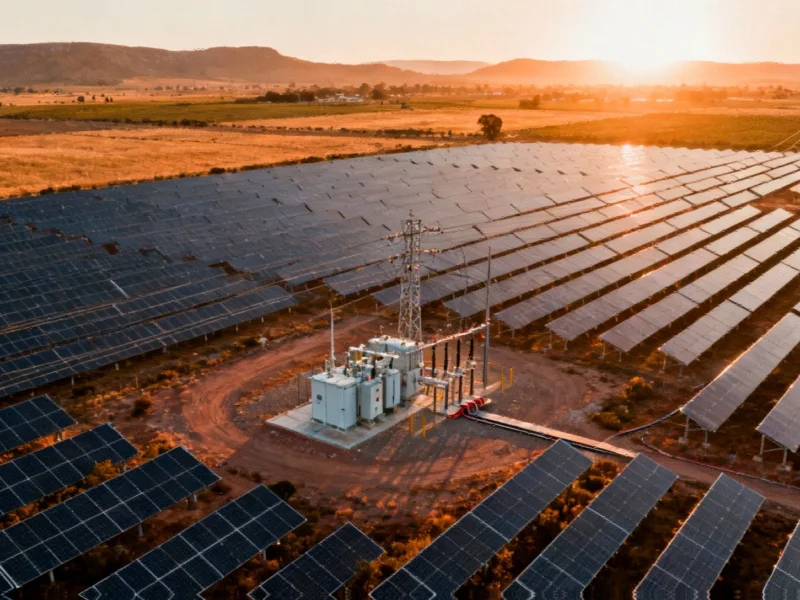Strategic Retreat in European Wind Power Expansion
Vestas Wind Systems, the Danish renewable energy giant, has officially suspended development of what would have been its largest manufacturing facility in Poland. The decision, confirmed in a company statement to Reuters, represents a significant recalibration of Europe’s offshore wind ambitions amid shifting market conditions and demand projections.
The shelved factory, announced just last year, was slated to become a cornerstone of Vestas’ European production network. The facility was planned to manufacture offshore wind turbine blades and create approximately 1,000 jobs, with operations scheduled to commence in 2026. The pause highlights broader challenges facing the European renewable energy sector as it navigates economic headwinds and policy uncertainties.
Market Realities Force Manufacturing Reassessment
Vestas attributed the decision directly to “lower than projected demand for offshore wind in Europe,” indicating that the company will now focus its manufacturing investments “where the offshore wind market volume and certainty allow.” This strategic shift comes amid what industry analysts describe as a consolidation phase for European offshore wind development.
The Financial Times first reported the suspension, noting that Vestas’ move reflects wider industry concerns about the pace of Europe’s renewable energy transition. As detailed coverage of the Vestas facility suspension reveals, the decision represents a significant moment for Europe’s clean energy manufacturing landscape.
Polish Energy Policy Creates Complex Backdrop
The factory pause occurs against a contradictory policy landscape in Poland. In August, President Karol Nawrocki vetoed legislation designed to streamline regulations for onshore wind farm construction. Yet just one week later, Prime Minister Donald Tusk announced intentions to “radically increase onshore wind capacity” and develop solutions for upgrading existing wind farms with more efficient turbines.
This policy tension reflects Poland’s challenging energy transition. While renewable generation has been steadily increasing at coal’s expense, fossil fuels still dominate the country’s energy mix. Recent data indicates renewables accounted for nearly 30% of Polish electricity generation in 2024, marking progress but highlighting the considerable distance remaining in the nation’s clean energy journey.
Global Context and Competing Priorities
Vestas’ strategic recalibration occurs alongside significant global technology power shifts in renewable energy supply chains. The European wind industry faces increasing competition and supply chain considerations that influence manufacturing investment decisions.
Meanwhile, parallel technological innovations in other sectors demonstrate how advanced manufacturing and detection systems are transforming multiple industries. The wind sector’s evolution reflects similar patterns of technological refinement and market adaptation.
Technical Infrastructure and Industry Adaptation
The wind energy sector’s development increasingly depends on sophisticated control systems and computing infrastructure. Recent industrial computing advancements have enabled more sophisticated turbine monitoring and grid integration capabilities, though these technological improvements alone cannot overcome market demand challenges.
As the industry navigates this period of adjustment, manufacturers are evaluating how emerging technologies, including those involving algorithmic optimization and AI systems, might enhance operational efficiency and address current market constraints.
Broader Implications for European Renewable Manufacturing
Vestas’ decision underscores several critical trends affecting Europe’s renewable energy manufacturing sector:
- Demand volatility continues to challenge long-term investment planning
- Policy consistency remains crucial for manufacturing commitment
- Global competition influences European production strategies
- Supply chain optimization becomes increasingly important in uncertain markets
The suspension serves as a reminder that even well-established renewable technologies face market realities that can disrupt carefully laid expansion plans. As European nations work to meet climate targets, the Vestas decision highlights the delicate balance between ambition and economic practicality in the continent’s energy transition.
This article aggregates information from publicly available sources. All trademarks and copyrights belong to their respective owners.
Note: Featured image is for illustrative purposes only and does not represent any specific product, service, or entity mentioned in this article.



